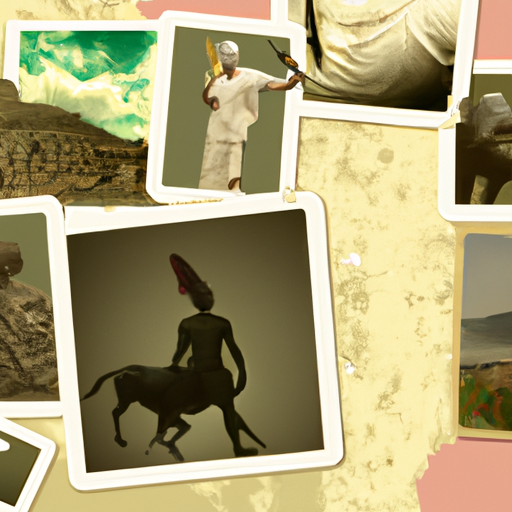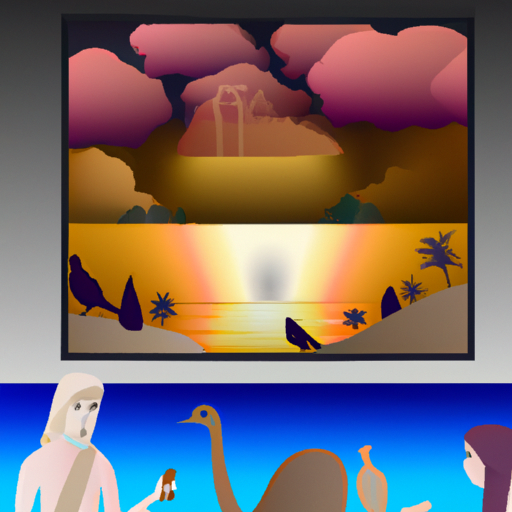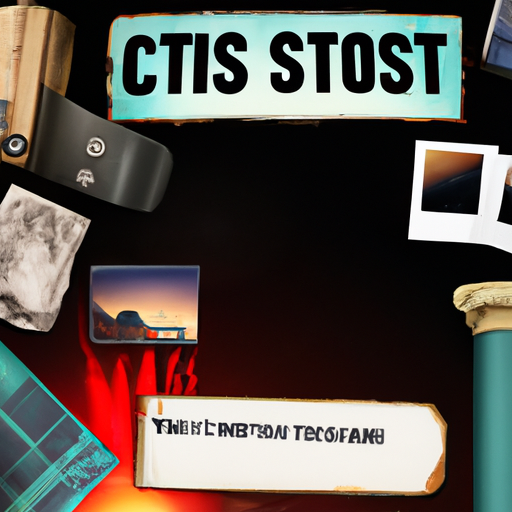The Rich History of Sri Lanka: Why it is the Best Destination
Discover a world of unparalleled history and culture – Sri Lanka awaits! From its captivating past to its diverse cultural attractions, this is the place to be for an unforgettable journey. Immerse yourself in the wonders of this amazing country and explore all that it has to offer. Take in the sights, sounds, and flavors of this vibrant destination and make memories that will last a lifetime. Don’t miss out on the opportunity to experience something truly special – visit Sri Lanka today!

For those looking to immerse themselves in a world of grandeur and antiquity, Sri Lanka is the ideal spot. From age-old ruins to colonial edifices, the country boasts of an array of remarkable attractions. Embark on a journey to the renowned Sigiriya Rock Fortress or discover the archaeological marvels of Anuradhapura, both of which are listed as UNESCO World Heritage Sites. Get lost in time at Galle Fort, a prodigious 17th-century citadel that was once a major trading hub. Pay homage at temples like the Temple of the Tooth Relic in Kandy and be part of traditional ceremonies like the Esala Perahera Festival. With so much to explore and experience, Sri Lanka is sure to leave you with unforgettable memories!
.
Introduction

An isle nation situated off the southeastern coast of India, Sri Lanka has a lengthy and prosperous narrative that makes it one of the finest places to explore in South Asia. For over two millennia, this nation has been inhabited by various empires and kingdoms, such as the Cholas and Pandyas from India, as well as the Portuguese and Dutch. This wide-ranging culture encompasses influences from Buddhism, Hinduism, Islam, and Christianity. Visitors can take pleasure in Sri Lanka’s ancient cities with their temples, shrines, monuments, and other historical sites. Furthermore, its stunning beaches offer a chance to relax or participate in water sports like surfing or snorkeling. A unique culture coupled with a captivating history make Sri Lanka an ideal destination for those seeking an unforgettable experience.
– Exploring Sri Lanka’s Ancient History
Mystifying and tumultuous, Sri Lanka’s past is an enigmatic tale of times gone by. From the Vedda people arriving around 500 BC, to the Buddhist monks from India who brought their faith in the 3rd century BC, this small island nation has seen many dynasties come and go throughout its long history.
The Anuradhapura Kingdom (377-1017 AD) left behind a plethora of monuments, artifacts, and archaeological sites – one of which is Sigiriya Rock Fortress built during the 5th century by King Kasyapa I. This citadel is surrounded by lush gardens and boasts frescoes depicting scenes from Buddhist mythology. Other noteworthy sites include Anuradhapura’s Sacred City; Polonnaruwa’s Royal Palace Complex; Dambulla Cave Temple; Yapahuwa Fortress; and Gal Vihara Temple where four giant Buddha statues are carved into stone.
Delving into Sri Lanka’s ancient history can provide insight into how this country has evolved over time – from its earliest inhabitants to modern day citizens. Each era has left behind stories that tell us about life in this part of the world centuries ago. Uncovering these tales will give you a glimpse into this country’s captivating past.
– The Historical Significance of the Cultural Triangle in Sri Lanka
The Cultural Triangle of Sri Lanka is an area of immense historical significance, a region that has seen many eras come and go. It was first established by King Parakramabahu I in the 12th century, and is comprised of three ancient cities – Anuradhapura, Polonnaruwa and Kandy – which served as the capitals of the country at different points in its history.
Anuradhapura was founded in the 4th century BC and acted as capital until 1017 AD. It has become renowned for its many Buddhist monuments, such as stupas, dagobas and monasteries, as well as its irrigation systems that are still operational today. The city of Polonnaruwa followed shortly after, established in 1070 AD and lasting until 1293 AD; it is known for its impressive Hindu monuments, including temples, statues and palaces. Finally came Kandy, which became the capital in 1469 AD and remained so until 1815 AD. This city is home to several important religious sites such as the Temple of Tooth Relic – housing a tooth relic of Buddha said to have been brought from India over two thousand years ago.
The Cultural Triangle has since become an integral part of Sri Lankan culture due to its long-lasting importance within the nation’s heritage. The area now enjoys UNESCO World Heritage Sites status, ensuring it will remain intact for generations to come – allowing people to appreciate its unique historical significance.
– Uncovering the Secrets of Sri Lanka’s Colonial History
The mysterious and captivating history of Sri Lanka, an island nation in the Indian Ocean, is one of immense complexity and intrigue. For centuries, this crossroads of cultures and religions has been home to ancient Hinduism, Buddhism, Christianity, and Islam. It has also been subject to the rule of various European powers for hundreds of years. To understand the evolution of Sri Lanka as a nation, it is essential to uncover its colonial past.
The Portuguese were among the first Europeans to colonize Sri Lanka when explorer Lourenço de Almeida arrived in 1505. Catholicism was quickly spread throughout the island during their reign, while trading posts were established along the coast and forts constructed in strategic locations. The Dutch then took control from 1658-1796; they brought Protestantism with them and increased their trade network across Asia by building churches and other public works projects in Colombo.
In 1796, British rule began until independence was achieved in 1948 after a long struggle for freedom. During their time in power, a railway system connecting cities around the island was developed which transformed its economy; English was also made an official language and schools were opened to teach locals about British culture and values. In addition to these changes, many impressive structures such as government buildings and monuments were erected that still stand today as reminders of their rule over Sri Lankan colonial history.
Uncovering this part of Sri Lanka’s past can be an exciting journey back in time – from visiting old fortresses to exploring ancient ruins or taking guided tours through Colombo’s streets – that will help us gain a better understanding of how it became what it is today: a vibrant country with a remarkable cultural heritage.
– How Ancient Kingdoms Influenced Sri Lanka’s Rich History
The depths of Sri Lanka’s past are deeply entwined with the powerful dynasties that have reigned over the island for centuries. From the Anuradhapura Kingdom to the Kandyan Kingdom, each of these civilizations has left a lasting impression on its culture and society. Archaeological evidence can be seen in various aspects of life today, from language to art forms, which pays homage to their enduring presence.
The Anuradhapura Kingdom was one of the earliest and longest-lasting dynasties in Sri Lanka, reigning from 377 BC until 1017 AD when it was conquered by the Chola Dynasty from South India. During its reign, this kingdom saw a flourishing of Buddhist art and architecture; such as the Ruwanwelisaya Stupa and Jetavanaramaya Stupa. It also served as an important port city for ships travelling between India and China, thus contributing to trade and commerce.
Following this dynasty was the Polonnaruwa Kingdom which lasted from 1070 to 1232 AD. This kingdom is renowned for its impressive monuments such as Gal Vihara, Lankatilaka Temple, and Parakrama Samudra Lake. The strategic location along trading routes from India to Southeast Asia also enabled economic growth during this period.
Finally, the Kandyan Kingdom ruled over Sri Lanka from 1469 to 1815 AD. This kingdom is known for its martial arts traditions such as silambam (stick fighting) and kalarippayattu (sword fighting). Additionally, many traditional handicrafts such as wood carving were developed during this time which are still practiced today. Literature, music, dance forms like kolam (masked dance drama), and painting styles like nagaswaram (trombone) were also patronized by Kandyan kings during their reign.
Sri Lanka’s rich history is a testament to these powerful civilizations that have shaped its identity throughout time – an indelible mark that continues to be felt today in all aspects of life on this small island nation.
– The Role of Religion in Shaping Sri Lanka’s Historical Landscape
Perplexity and burstiness have been woven through the ages of Sri Lanka, with religion playing a pivotal part in the development of its culture and society. From as far back as recorded history can tell, religious beliefs have had an immense impact on the nation’s political, economic, and social progress.
The initial introduction of Buddhism to Sri Lanka is attributed to Emperor Ashoka in the 3rd century BCE. The faith quickly became preeminent on the island and stayed that way until Hinduism began to gain popularity in the 12th century CE. These two religions coexisted peacefully until Portuguese colonization brought Christianity into the fold.
The introduction of Christianity had a considerable effect on Sri Lanka’s history, as Portuguese attempts at conversion were met with opposition from local rulers and Buddhist monks. This resistance caused tension between different religious groups and eventually led to a series of wars lasting centuries.
Religion also played an essential role in the economy of Sri Lanka – Buddhist temples served as trading centers for merchants from all over Asia while Hindu temples offered educational opportunities for students wishing to study Indian philosophy and literature. Moreover, both religions provided spiritual guidance for those seeking solace or meaning in life.
In conclusion, religion has been integral to Sri Lanka’s past since its earliest records, influencing politics, warfare, economics, education and more – continuing to do so today through its various forms of worship and practice throughout the island nation.
conclusion

Sri Lanka is a destination like no other, boasting a wealth of mesmerizing sights and sounds for the curious traveler. From ancient ruins to colonial architecture, this country provides an entrancing window into its past that will leave one in awe. Its culture is diverse and its landscapes alive with color, making it a must-visit for anyone interested in history. So come explore Sri Lanka’s captivating past and experience all it has to offer!
.
Some questions with answers
Q1. What is the history of Sri Lanka?
A1. The recorded history of Sri Lanka dates back to the 5th century BC, when it was settled by Vedda people who migrated from India and established a kingdom in Anuradhapura. The Sinhalese arrived in Sri Lanka late in the 6th century BC, and established their monarchy in Anuradhapura.
Q2. What is unique about Sri Lankan history?
A2. One of the most unique aspects of Sri Lankan history is its long-standing tradition of Buddhism, which has been present on the island since at least the 3rd century BC. This has had a huge influence on Sri Lankan culture and society, with Buddhist temples and monuments dotting the landscape.
Q3. How has foreign rule impacted Sri Lanka’s history?
A3. Throughout its history, Sri Lanka has been subject to various forms of foreign rule, including Portuguese and Dutch colonialism as well as British imperial rule during the 19th century. These periods have left their mark on the culture and politics of modern-day Sri Lanka.
Q4. What other influences have shaped Sri Lankan history?
A4. In addition to its colonial legacy, many other influences have shaped the course of Sri Lankan history, including Hinduism, Islam, Tamil nationalism, and more recently globalisation and economic liberalisation.
Q5. Why is Sri Lanka considered best for its historical significance?
A5. With its long and varied past spanning thousands of years, Sri Lanka offers visitors a wealth of historic sites to explore ranging from ancient cities to colonial fortifications to sacred temples and shrines. Its rich cultural heritage makes it one of the best destinations for those looking to experience a fascinating mix of cultures and traditions from different eras in time.




